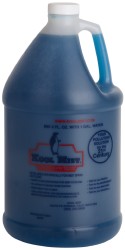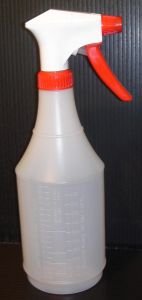Chad, Good reply . .
There are some other things that come into play with coolant and the use of cutting fluids. Chad had all the general answers to doing it, if you are doing a lot of material and want to keep both the cutter and the work piece from heating up. It also depends on the cutters that you are using, if you are using a small end mill on a piece of mild steel, you may want to just use a little oil on it to keep it from loading up and keep the finish - decent. Speeds and feeds also come into play with it, too fast and you will tear up a cutter or burn it into the part, depending on the material and the cutter. There are some materials that just need some sort of coolant - Titanium being one of them that I seldom had good luck cutting with out it, depending on the depth of the cut and size of the cutter, and weather I was using the end of the cutter or the side of it. Chad also hit on one thing about coolant, it will keep the chips under control, uses it to wash them away, and cooling down the work piece, both a plus for big machines, especially CNC's, some of them will go over 20" a minute, that's a lot of chips to get rid of.
There are books out there to set speeds and feeds with, and they are as general rule very good. Time and experience will be the best teachers, and if you are just starting out as a machinist, you will tear up cutters and mess up jobs and material, and learn from them. They have come a long way with the coolants in the past 20 years, I don't care much for WD-40 for Alum, but it works, there are better materials for that, just cost a bit more, but do a better job in MHO.
A lot of what you will use coolant on will depend on the machine you are using, a big mill will need coolant, a small bench mill - you will likely just have a can or container of cutting oil and an acid brush to apply it with. Again, depending on the material and how much of it you are taking off. . . Experience. I have a small bench mill and have yet to run any coolant or mist on any thing I have had to mill on it. But I have run Cinci CNC's that don't work well with out it. Some materials you will not want to transfer a lot of heat to the part, it will, depending on the speed of the cutter and the feed that you are using, heat treat the spot where the cutter is (supposed to be) cutting. Again, experience, slow down both the cutter and the feed, and you will be supprised the job will get done, it is not a race, just dollars.
Then - it equates to if you want to go fast and clean up a mess that you created - or, slow down and take the time to do it right. If you have ever watched an OLD Machinist - it looks like he is in slow motion . . he is, because he only wants to do it one time . . right !! Does the haire and the tortus come to mind . . ? Back in the early 60's when I started out in a machine shop, I was a bit aprehensive about too much speed and feed. My boss told me speed it up till you burn up the cutter - then back off . . I always considered that a bit over done . . but I learned to run the machine till the chips hit the floor like Quarters, he loved it . . .
Most likley got way off the subject, but after over 45+ years in machine shops - and now in my retirement (7 yrs) I am still running them, you learn the ways. Think ahead . . . .
Phantom496



